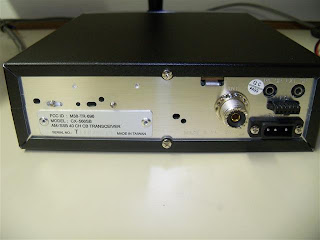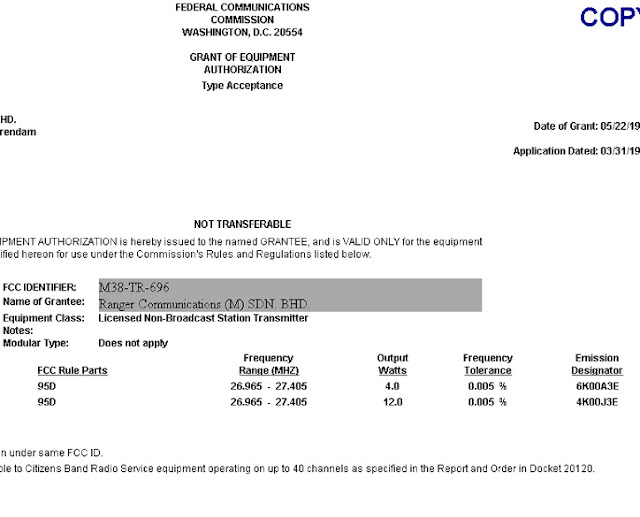 If your not sure whether your radios are capable of the new narrowband emission standards This quick guide can help.
If your not sure whether your radios are capable of the new narrowband emission standards This quick guide can help.Before a radio can be sold it has to be "type accepted" by the FCC. So here's what to look for.
The next section of this guide will go over the steps to uncover information about your hand helds, base station, repeater, or mobile transmitter. There is a wealth of information hidden in the numbers on the back.
STEP 1) Look on the back of your radio. You will notice a sticker. If you look closely you will see there is an FCC id number
Wait, look a littttttle bit closer. There it is!
Write down the FCC ID number. It should be the first number just above the model number.
STEP 2) Now that you have your FCC ID number you can go to the FCC's website here http://transition.fcc.gov/oet/ea/fccid/ - Enter the number from the back of your radio. Be careful to enter as pictured below:
Step 3) On the results page you'll notice a "check" next to the model that matches your radio. Its under the heading "Display Grant" Click on it (as pictured below)
Step 4) You will see that your frequency range, emission designators and power levels are all represented.
Even the relevant rule part that governs your radio (Note anything less than 12.5 kilohertz is narrowband complaint) See below for an example.
If you need more information you can always contact me at david@fccforms.com or visit us on the web at http://www.fccforms.com.




